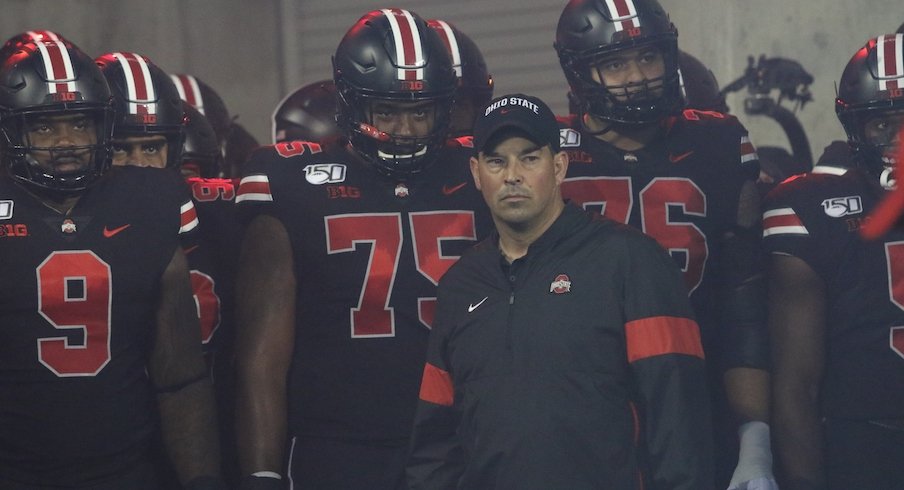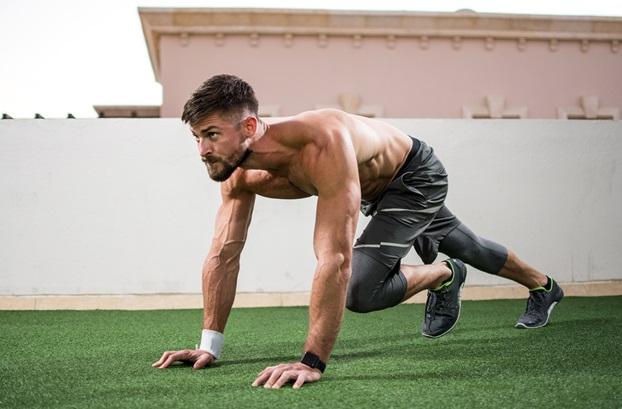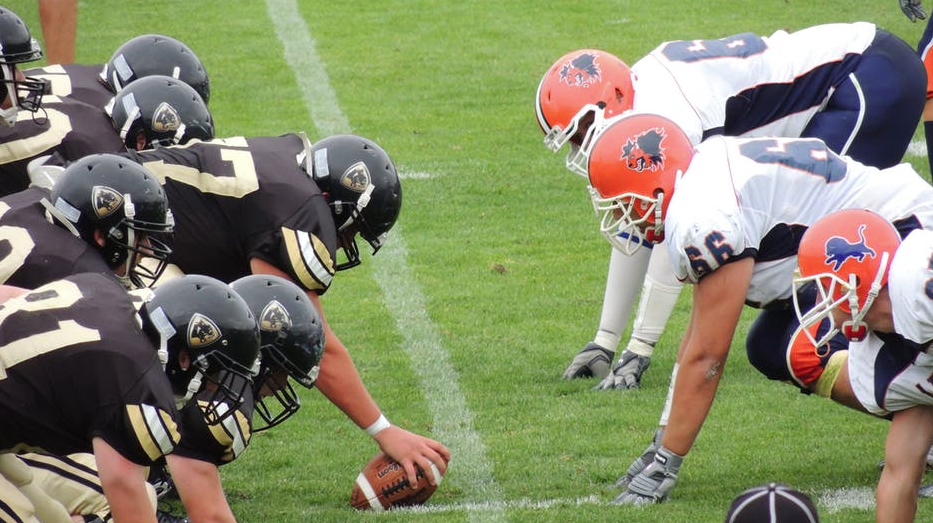

WHAT EXERCISE IS BEST FOR SPORTS PERFORMANCE? YOU'LL NEVER GUESS
The best way to improve sports performance to
practice your actual sport. A basketball player could spend hours in the
weight room getting stronger, but that’s not going to help their jump
shot. Yet, as athletes, we still need to withstand the physical demands
of competition. Given equal skill level, an injured, weak athlete will
always lose to a healthy, more powerful one.
If you had all the time in the world, you’d spend hours improving muscular strength, size, and power. You’d use a wide range of exercises to tackle mobility, stability, and core strength through all ranges. But eventually, without getting specific, the law of diminishing returns applies.
Elite athletes aren’t good at everything. They’re exceptional at one very specific thing - running routes, dribbling through defenders, or carving up the ice. Specialties even exist within sports based on position. So how in the world could there be a single exercise that covers it all?
In truth, there isn’t. But there is one exercise that provides the greatest return on investment - sprinting.
Sprint your way to Sports Performance
When most athletes try to get better, faster, and stronger, their first instinct is to hit the gym. Unless you’re a track athlete, I can almost guarantee you your extras are done in the weight room. Of course, lifting has its place. But a comprehensive strength and conditioning program considers the whole picture. Therefore primarily focusing on weights to improve performance is a flawed concept.
Think backwards - what do you really want to get out of training?
Outside of tactical awareness and technical practice, we use strength and conditioning to:
Maximize mechanical efficiency to actually use that force
Improve ability to produce force in sport-specific movement patterns
Sustain intensity and metabolic capacity across energy systems
Squats, pull-ups, core work and conditioning all play a role. However, sprinting takes the cake because it tackles those three aspects of performance in one exercise.
Why you should prioritize sprinting
First of all, you can sprint anywhere. You don’t need special equipment, a gym, nor a spotter. All you need is a decent warm-up and some space to get after it. I’ve even seen elite athletes sprint in hotel hallways.
With sprinting, there’s no excuse to miss training. As top-level performance accumulates over time, those who get better every day will dominate the opposition. You can sprint at any time, anywhere, and reap benefits across multiple pieces of athleticism.
Through sprinting, you can do the following:
• Decrease energy cost of movement in your sport
• Increase ability to apply force
• Train multiple energy systems in one
Sprint to improve bio mechanical efficiency
Let me start with one caveat - I’m talking sprinting in your sport. If you’re a cyclist, do bike sprints. If you’re a rower, row as fast as possible. For field sports, just get out there and race. Doing the actual activity will prepare your body for the specific demands.
For the sake of simplicity, however, I’m only going to talk about sprinting in terms of running.
Research has shown that sprinting involves three phases - acceleration, generation of maximum speed, and maintenance of speed. Sprinting itself is a skill. Each phase demands a different technique. Learn which is dominant in your sport, and focus on that.
Faster players, such as punt returners, might spend most of their time near top speed. Others might rely purely on acceleration, such as linemen or the front row in rugby. One study even confirmed that, when averaging total sprint efforts, rugby players rarely reach max speed in a match.
By practicing it repeatedly (and doing it well) you’ll be more energy efficient in a game. When doing your sprint sessions focus on:
Forward-directed ground-reaction force
Limited contact time on the ground by developing stiffness
Rapid recovery of swing leg to a high knee position
Master the skill of accelerating and moving at top speed, and you’ll have much more left in the tank during competition.
Increased force production
Increasing acceleration and velocity tends to make you stronger in the weight room. Why? Well, by nature, it’s a maximal effort event. In sprinting, much like a max effort squat, your body pushes as hard as it can to overcome external forces (gravity, wind resistance) and your own body weight. Sprinting stimulates your CNS to increase the rate at which you develop force.
Moreover, sprinting can indirectly develop strength by focusing on fast-twitch movements. According to research out of the Journal of Applied Physiology, developing type II, fast-twitch muscle fibers yields greater force potential than muscles with slow-twitch, type I fibers. How? Growth of type II muscle fibers increases actin and myosin filaments, elevating one’s ability to generate force.
Considering the above, sprinting is one of the most effective ways to recruit and grow fast-twitch muscle. By doing so, you not only get faster, but your strength goes up as well.
Energy systems
Our body works across three main systems to produce energy during exercise - ATP-CP, glycolytic, and aerobic. Sports performance requires fitness in at least one of these areas. The specific demands depend on activity, but they’re not mutually exclusive. Here’s a short breakdown on each:
1. ATP-CP/Phosphagen - provides energy needed for extremely high intensity, very short duration exercise (between 6-10 seconds)
2. Anaerobic/Glycolytic - provides energy required for high intensity, yet more moderate duration exercise when oxygen is unavailable (10-90 seconds)
3. Aerobic - provides energy needed for lower-to-moderate intensities with longer duration (>2 minutes)
To maximize your training efforts, it’s important to know which way your sport leans. For example, running the length of a soccer field is primarily glycolytic, but you go through the ATP-CP system in the first few seconds. Carry on running for the whole game, and you’ll eventually cross in to aerobic. Football, basketball, and baseball, for example, rely heavily on the first two energy systems.
Since sprinting provides a high-intensity, short burst stimulus, it can be manipulated to work the primary energy systems used in most field sports. Go 10-40 meters as fast as possible with full recovery to target phosphagen. Extend the distance to reach anaerobic conditioning.
If your sport requires a high degree of aerobic fitness, manipulate the rest periods. Sure, you might be slightly more anaerobic, but remember - they’re not mutually exclusive. Your body will attempt to use oxygen for as long as possible, stretching your VO2 max. Sprinting is just like any other exercise in the gym. You can manipulate sets, reps, and intensity to get the desired outcome, but the fundamentals remain the same.
Final thoughts
I’m obviously not advocating for removing everything else from your training. You don’t need to sprint every day, just like you wouldn’t squat or bench every day. Add sprint training 1-2 times each week alongside a balanced strength and conditioning program. Safely implementing sprint training can mitigate injury by preparing for the demands of competition, but that doesn’t mean you should neglect other aspects. Stay balanced, stay humble, grind harder than the person next to you, and sprint your way to success.
________________________________________________________________

If you had all the time in the world, you’d spend hours improving muscular strength, size, and power. You’d use a wide range of exercises to tackle mobility, stability, and core strength through all ranges. But eventually, without getting specific, the law of diminishing returns applies.
Elite athletes aren’t good at everything. They’re exceptional at one very specific thing - running routes, dribbling through defenders, or carving up the ice. Specialties even exist within sports based on position. So how in the world could there be a single exercise that covers it all?
In truth, there isn’t. But there is one exercise that provides the greatest return on investment - sprinting.
Sprint your way to Sports Performance
When most athletes try to get better, faster, and stronger, their first instinct is to hit the gym. Unless you’re a track athlete, I can almost guarantee you your extras are done in the weight room. Of course, lifting has its place. But a comprehensive strength and conditioning program considers the whole picture. Therefore primarily focusing on weights to improve performance is a flawed concept.
Think backwards - what do you really want to get out of training?
Outside of tactical awareness and technical practice, we use strength and conditioning to:
Maximize mechanical efficiency to actually use that force
Improve ability to produce force in sport-specific movement patterns
Sustain intensity and metabolic capacity across energy systems
Squats, pull-ups, core work and conditioning all play a role. However, sprinting takes the cake because it tackles those three aspects of performance in one exercise.
Why you should prioritize sprinting
First of all, you can sprint anywhere. You don’t need special equipment, a gym, nor a spotter. All you need is a decent warm-up and some space to get after it. I’ve even seen elite athletes sprint in hotel hallways.
With sprinting, there’s no excuse to miss training. As top-level performance accumulates over time, those who get better every day will dominate the opposition. You can sprint at any time, anywhere, and reap benefits across multiple pieces of athleticism.
Through sprinting, you can do the following:
• Decrease energy cost of movement in your sport
• Increase ability to apply force
• Train multiple energy systems in one
Sprint to improve bio mechanical efficiency
Let me start with one caveat - I’m talking sprinting in your sport. If you’re a cyclist, do bike sprints. If you’re a rower, row as fast as possible. For field sports, just get out there and race. Doing the actual activity will prepare your body for the specific demands.
For the sake of simplicity, however, I’m only going to talk about sprinting in terms of running.
Research has shown that sprinting involves three phases - acceleration, generation of maximum speed, and maintenance of speed. Sprinting itself is a skill. Each phase demands a different technique. Learn which is dominant in your sport, and focus on that.
Faster players, such as punt returners, might spend most of their time near top speed. Others might rely purely on acceleration, such as linemen or the front row in rugby. One study even confirmed that, when averaging total sprint efforts, rugby players rarely reach max speed in a match.
By practicing it repeatedly (and doing it well) you’ll be more energy efficient in a game. When doing your sprint sessions focus on:
Forward-directed ground-reaction force
Limited contact time on the ground by developing stiffness
Rapid recovery of swing leg to a high knee position
Master the skill of accelerating and moving at top speed, and you’ll have much more left in the tank during competition.
Increased force production
Increasing acceleration and velocity tends to make you stronger in the weight room. Why? Well, by nature, it’s a maximal effort event. In sprinting, much like a max effort squat, your body pushes as hard as it can to overcome external forces (gravity, wind resistance) and your own body weight. Sprinting stimulates your CNS to increase the rate at which you develop force.
Moreover, sprinting can indirectly develop strength by focusing on fast-twitch movements. According to research out of the Journal of Applied Physiology, developing type II, fast-twitch muscle fibers yields greater force potential than muscles with slow-twitch, type I fibers. How? Growth of type II muscle fibers increases actin and myosin filaments, elevating one’s ability to generate force.
Considering the above, sprinting is one of the most effective ways to recruit and grow fast-twitch muscle. By doing so, you not only get faster, but your strength goes up as well.
Energy systems
Our body works across three main systems to produce energy during exercise - ATP-CP, glycolytic, and aerobic. Sports performance requires fitness in at least one of these areas. The specific demands depend on activity, but they’re not mutually exclusive. Here’s a short breakdown on each:
1. ATP-CP/Phosphagen - provides energy needed for extremely high intensity, very short duration exercise (between 6-10 seconds)
2. Anaerobic/Glycolytic - provides energy required for high intensity, yet more moderate duration exercise when oxygen is unavailable (10-90 seconds)
3. Aerobic - provides energy needed for lower-to-moderate intensities with longer duration (>2 minutes)
To maximize your training efforts, it’s important to know which way your sport leans. For example, running the length of a soccer field is primarily glycolytic, but you go through the ATP-CP system in the first few seconds. Carry on running for the whole game, and you’ll eventually cross in to aerobic. Football, basketball, and baseball, for example, rely heavily on the first two energy systems.
Since sprinting provides a high-intensity, short burst stimulus, it can be manipulated to work the primary energy systems used in most field sports. Go 10-40 meters as fast as possible with full recovery to target phosphagen. Extend the distance to reach anaerobic conditioning.
If your sport requires a high degree of aerobic fitness, manipulate the rest periods. Sure, you might be slightly more anaerobic, but remember - they’re not mutually exclusive. Your body will attempt to use oxygen for as long as possible, stretching your VO2 max. Sprinting is just like any other exercise in the gym. You can manipulate sets, reps, and intensity to get the desired outcome, but the fundamentals remain the same.
Final thoughts
I’m obviously not advocating for removing everything else from your training. You don’t need to sprint every day, just like you wouldn’t squat or bench every day. Add sprint training 1-2 times each week alongside a balanced strength and conditioning program. Safely implementing sprint training can mitigate injury by preparing for the demands of competition, but that doesn’t mean you should neglect other aspects. Stay balanced, stay humble, grind harder than the person next to you, and sprint your way to success.
________________________________________________________________












